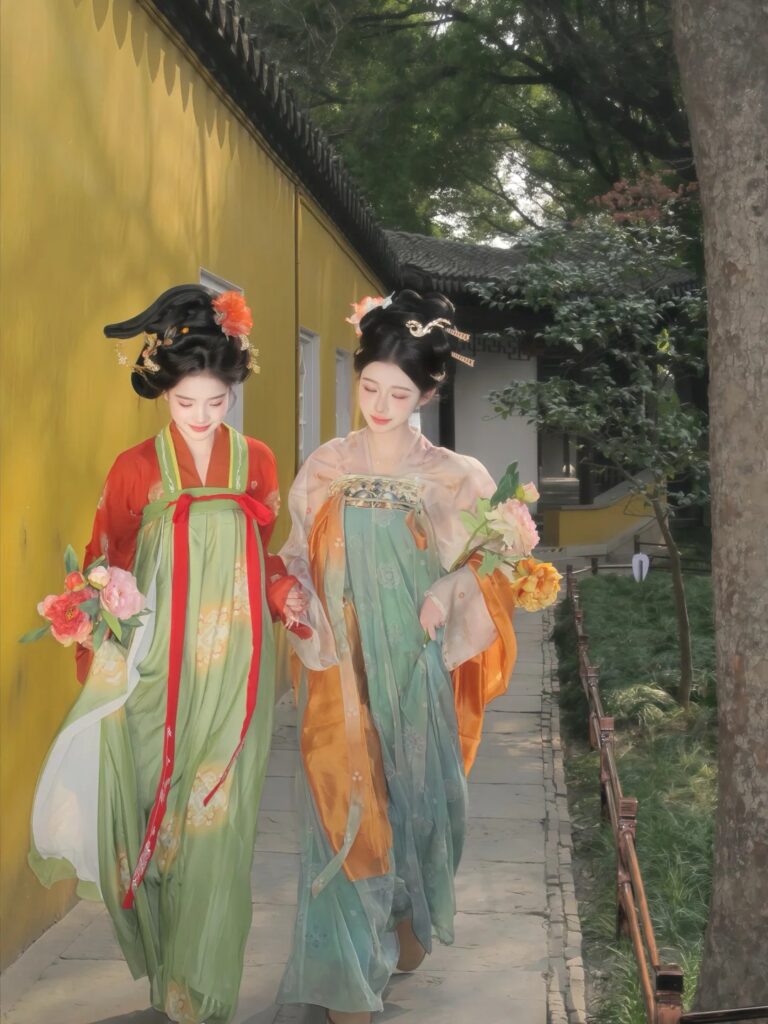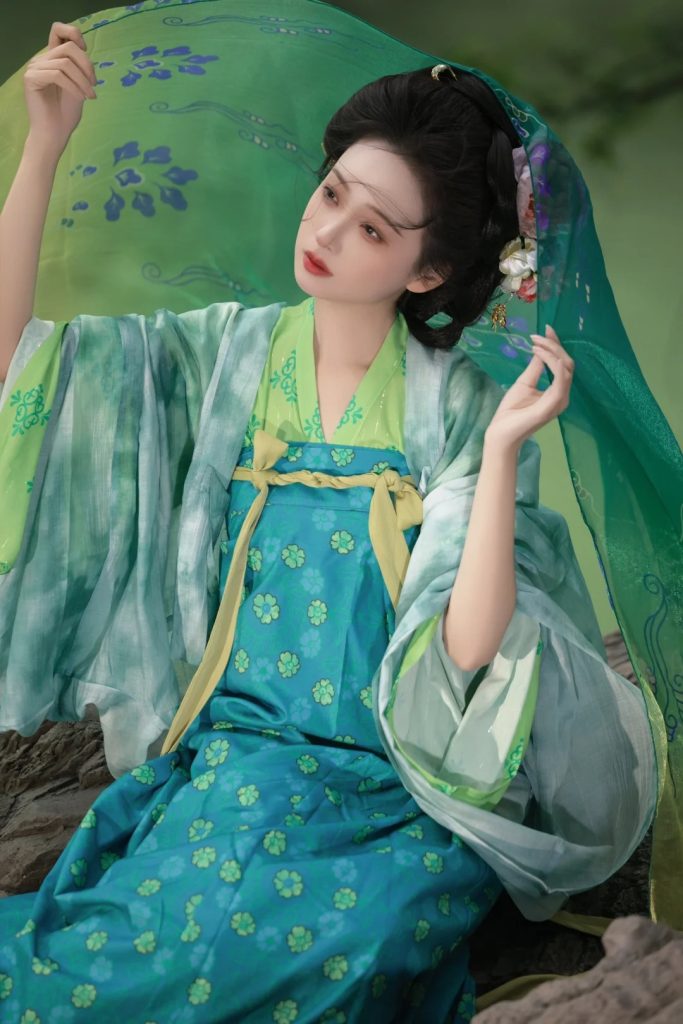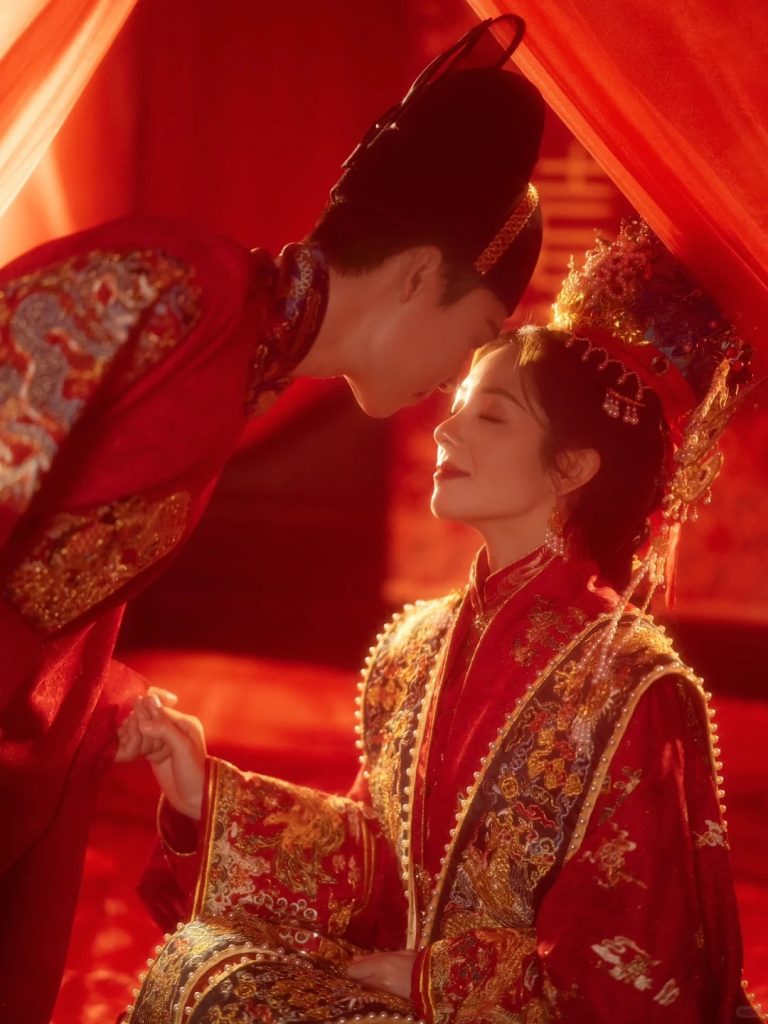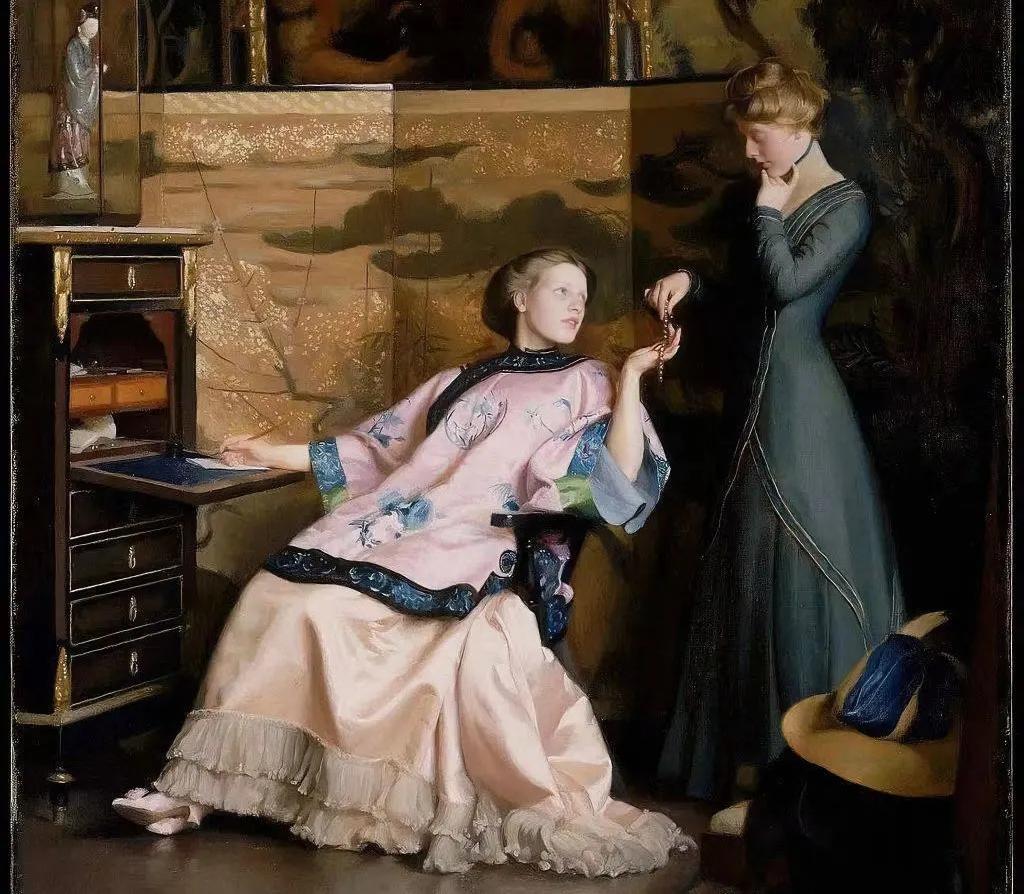Mastering the Art of Wearing Tang Dynasty Hanfu: A Step – by – Step Guide

Embarking on the journey of learning how to wear Tang Dynasty Hanfu is like stepping into a time – machine, transporting you back to one of China’s most glorious eras. The Tang Dynasty, renowned for its prosperity, cultural exchange, and artistic achievements, left behind a sartorial legacy that continues to captivate fashion enthusiasts around the world. At [your website name – shop.tangpura.com , we’re passionate about sharing the beauty and intricacies of Tang Dynasty Hanfu, and in this blog post, we’ll guide you through the proper way to wear this magnificent traditional attire.
Styles of Tang Dynasty Hanfu: The Foundation of the Ensemble
Ruqun: The Epitome of Feminine Grace
The Ruqun was a popular choice among Tang – dynasty women. It consisted of a short, form – fitting top called the Ru, which was usually cropped just below the bust, and a long, flowing skirt known as the Qun. The Ru could be either a front – closing or a cross – collar style. To wear the Ruqun, start by putting on the Ru. Ensure that the fit is snug around the bust, accentuating the feminine silhouette. Then, drape the Qun around your waist, tying it securely with a sash. The sash not only holds the skirt in place but also adds an element of elegance. You can find a variety of Ruqun styles in our online store [insert relevant product page link on your site]. The colors of the Ruqun in the Tang Dynasty were often vibrant, reflecting the lively and prosperous nature of the era.
Yuanlingshan: A Symbol of Masculine Elegance
For men, the Yuanlingshan was a common garment. It featured a round – collar design, long sleeves, and a straight hem. The Yuanlingshan was typically made of high – quality silk or cotton fabrics. When wearing the Yuanlingshan, first slip it over your head. Adjust the collar so that it lies flat and comfortably around your neck. The sleeves should fall gracefully to your wrists. Belt the Yuanlingshan at the waist to give it a more tailored look. This style was not only practical for daily activities but also exuded an air of sophistication, suitable for various occasions in Tang – dynasty society.
The Art of Layering in Tang Dynasty Hanfu
Adding Depth with Inner Layers
Layering was an essential aspect of wearing Tang Dynasty Hanfu. Under the outer garments, both men and women would often wear inner layers for added warmth and a more complete look. For example, beneath the Ruqun, women might wear a simple, long – sleeved undershirt. This undershirt not only provided an extra layer of comfort but also added a soft, flowing element to the overall outfit. Men, on the other hand, would wear an inner robe under the Yuanlingshan. These inner layers were usually made of lightweight, breathable fabrics such as silk or linen. You can read more about the historical significance of layering in traditional Chinese clothing on the official website of the Palace Museum: https://www.dpm.org.cn/Home.html.

Outer Layers for Style and Function
Outer layers in Tang Dynasty Hanfu served both functional and aesthetic purposes. Women might drape a Shawl – like piece, known as a Pei, over their shoulders. The Pei added a touch of elegance and could be used to cover the arms or wrapped around the body in different ways, depending on the occasion. Men, in some cases, would wear a long, loose – fitting overcoat over the Yuanlingshan, especially during colder weather or for more formal events. These outer layers not only enhanced the visual appeal of the outfit but also provided protection from the elements.
Accessories: The Finishing Touches of Tang Dynasty Hanfu
Head Accessories
Head accessories were a crucial part of completing a Tang – dynasty look. Women often adorned their hair with elaborate hairpins, combs, and hairpieces. These accessories were made from a variety of materials, including gold, silver, jade, and pearls. For example, a phoenix – shaped hairpin was a popular choice, symbolizing beauty and grace. Men, on the other hand, would wear hats such as the Wushamao, which was a black, square – shaped hat with two long flaps at the back. The Wushamao was not only a fashion statement but also indicated the wearer’s social status and occupation. You can find some stunning replicas of Tang – dynasty head accessories in our accessory collection [insert relevant product page link on your site].

Footwear and Belts
Footwear in the Tang Dynasty was both stylish and practical. Women typically wore embroidered silk shoes with pointed toes, while men wore more robust leather or cloth shoes. Belts were also an important accessory. For men, the belt was often wide and made of leather or fabric, adorned with metal buckles or decorative plaques. In women’s fashion, the belt was used to cinch the waist of the Ruqun, highlighting the feminine figure. The design and material of the belt could vary depending on the social status of the wearer.
Cultural Significance Behind the Wear
Understanding how to wear Tang Dynasty Hanfu is not just about donning a beautiful outfit; it’s about connecting with a rich cultural heritage. Each element of the clothing, from the style of the garment to the choice of accessories, carried symbolic meanings. For example, the use of certain colors was restricted to specific social classes, and the patterns on the clothing often had auspicious connotations. By wearing Tang Dynasty Hanfu, you’re paying homage to a time of great cultural exchange, innovation, and artistic expression.
_来自小红书网页版-1024x683.jpg)
Conclusion
Learning how to wear Tang Dynasty Hanfu is a rewarding experience that allows you to appreciate the beauty and complexity of traditional Chinese fashion. Whether you’re a seasoned Hanfu enthusiast or a beginner, mastering the art of wearing Tang Dynasty Hanfu opens the door to a world of history and culture. At shop.tangpura.com, we encourage you to explore our collection of Tang Dynasty Hanfu and accessories, and start your own journey of embracing this timeless style.





Responses